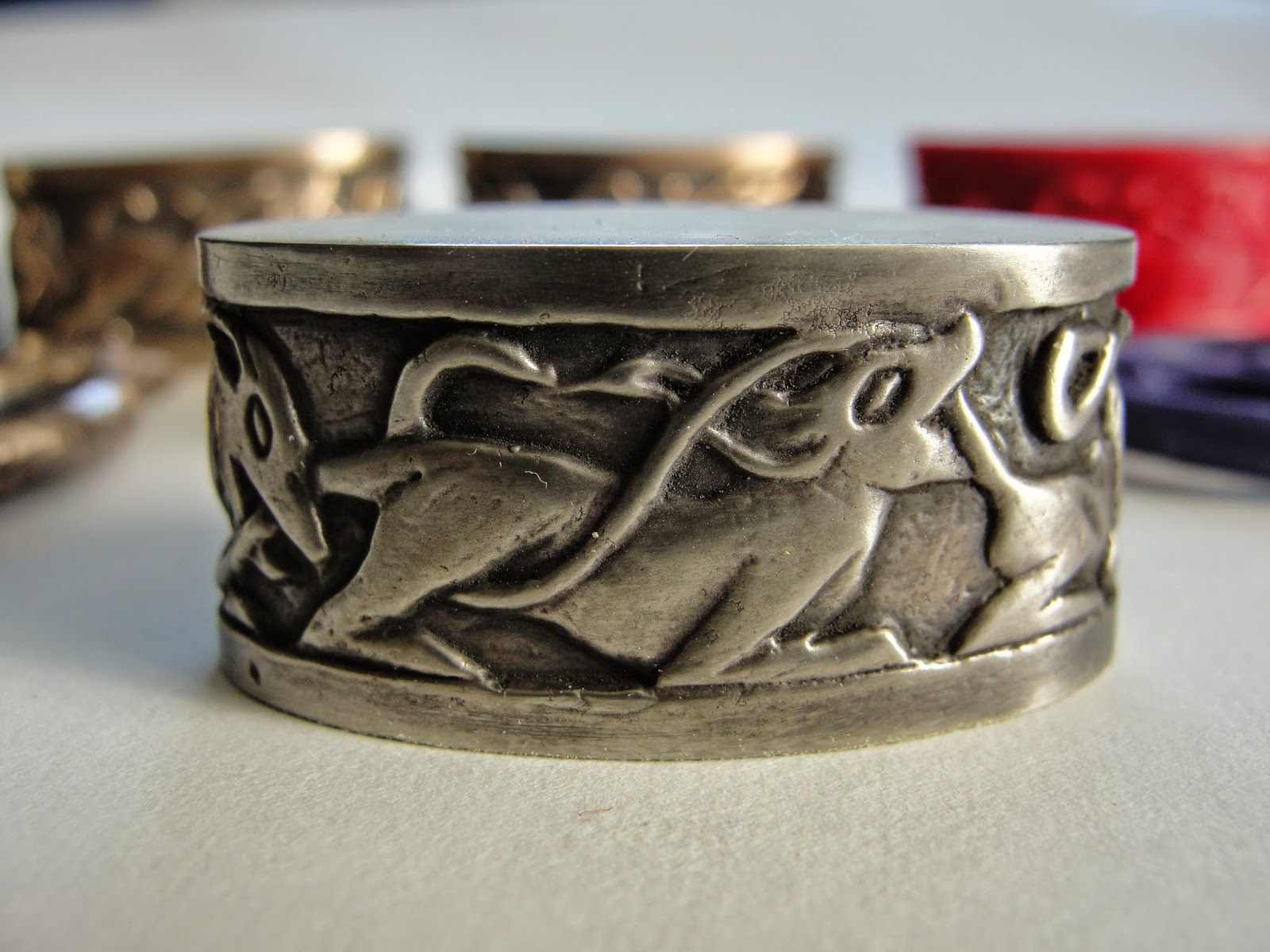Vikings didn't really use daggers as far as we know. But that doesn't mean I can't make daggers in a viking style!
I did all the forge-welding of this blade in J. Arthur Loose's Viking Dagger class at the New England School of Metalwork a year or more back. I just didn't have time to forge out the bevels in class, and it sat for a year or so before I got around to it. The core of the blade is two pattern-welded rods of 1095 and 15N20 that I was attempting to make into a serpent pattern, but ended up with something more like tangled strings. I wrapped and edge bar of 1084 around the core and welded it on. The blade overall is finished down to 800 grit, but the wrapped edge I took down to 2000 grit so it's pretty much a mirror finish. If you look carefully in the picture above you can see the snow reflected in the blade along the upper edge. This is a larger version of this blade, which I made in the same class from the same billets of steel.
The fitting of the blade are all bronze castings I carved myself in wax. I used this dagger as an excuse to push myself and see what I could accomplish, so not only did I try complex carvings, but I also taught myself to cast gems in place in the bronze. That took some learning--you're looking at the third hilt here. The first two I didn't hollow out enough space behind the gem for the investment to form a strong supporting pillar and the rush of liquid bronze into the mold broke the gems loose and they were lost somewhere in the interior of the hilt. Between the hilt and the pommel I lost 6 rubies. Luckily lab-grown rubies are only $3 each in this size. They are 'real' rubies in that they are the exact same substance as a natural ruby, but because they come from a lab they are 1/1000th the price.
The sheath is a core of quince wood. I split the board in half and carefully carved out a space for the blade using chisels. I took a clue from Japanese scabbard makers and didn't use any sandpaper, because you risk leaving behind a grain of abrasive that will scratch the blade when it is drawn/inserted. The core is wrapped in leather, fittings are attached, and the whole thing is waxed.
The handle is ebony that had been sitting in my shop for literally 20 years. Wish I'd stocked up more back then :-\
And then there's that question that always comes up with blades like this--is it a sword? The blade itself is 16" long, 23" overall. I guess it depend on who is holding it. For my 5'6" daughter it's a short sword. For a big guy it would be a dagger, and for a hobbit it's probably a full blown sword. I'm inclined to call it a short sword because of the way it handles. But hey, whoever buys it can categorize it any way they want.

















































